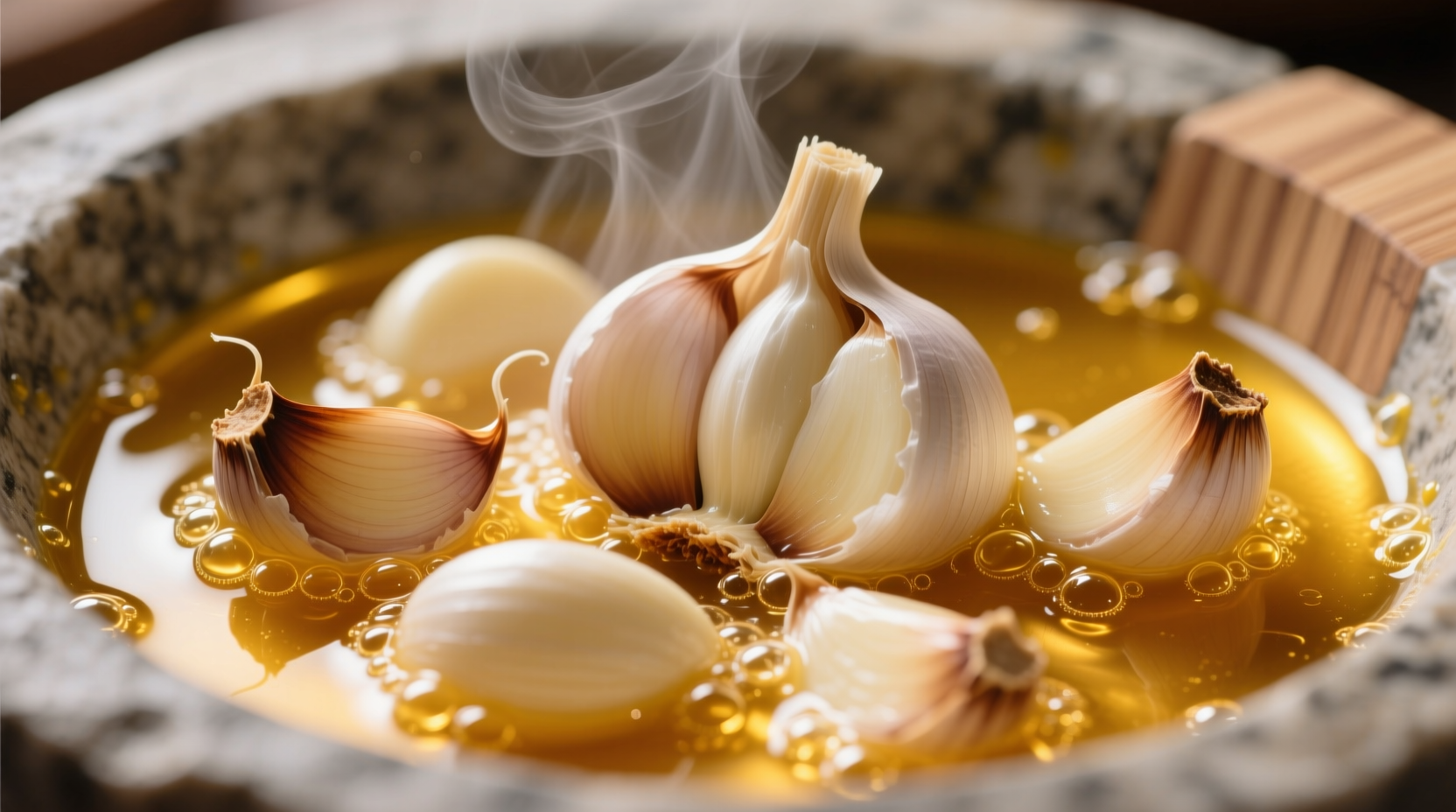Why Garlic Ghee Deserves a Place in Your Kitchen
Garlic ghee represents one of the most versatile flavor foundations in Indian cuisine, combining the nutty richness of clarified butter with garlic's aromatic complexity. Unlike regular butter, ghee has a higher smoke point (485°F/252°C), making it ideal for high-heat cooking while delivering garlic's distinctive flavor without burning.
Food historians note that ghee preparation dates back over 5,000 years in Indian subcontinent cooking traditions. The addition of garlic creates what culinary anthropologists call a "flavor bridge"—a technique where one ingredient connects multiple flavor profiles within a dish.
| Characteristic | Regular Ghee | Garlic Ghee |
|---|---|---|
| Smoke Point | 485°F (252°C) | 450°F (232°C) |
| Shelf Life | 6-12 months | 3-4 weeks |
| Primary Flavor Notes | Nutty, caramel | Garlic-forward, umami |
| Best Cooking Applications | Frying, roasting | Sautéing, finishing dishes |
Essential Ingredients and Equipment
Creating authentic garlic ghee requires minimal ingredients but precise technique. Professional chefs emphasize that ingredient quality directly impacts the final product's flavor profile.
- Unsalted butter (1 pound/450g) - preferably cultured for deeper flavor
- Fresh garlic (6-8 large cloves), thinly sliced
- Medium saucepan with heavy bottom
- Fine mesh strainer or cheesecloth
- Storage container with tight-fitting lid

Step-by-Step Preparation Guide
Follow this professional chef-tested method for perfect garlic ghee every time. The key lies in controlling temperature to prevent garlic from burning while fully developing flavors.
- Melt butter over medium-low heat until fully liquefied (5-7 minutes)
- Monitor stages: First foam appears (water evaporating), then milk solids separate (golden particles)
- Add garlic when butter reaches small bubble stage (after initial foaming subsides)
- Simmer gently for 12-15 minutes until garlic turns golden (not brown)
- Strain immediately through fine mesh into clean container
- Cool completely before sealing to prevent condensation
Avoiding Common Preparation Mistakes
Even experienced home cooks frequently encounter these issues when making garlic ghee:
- Burnt garlic: Results from heat too high or garlic added too early. Solution: Maintain medium-low heat and add garlic after initial foaming subsides
- Bitter flavor: Caused by overcooking milk solids. Solution: Remove from heat just as golden color develops
- Short shelf life: Occurs when moisture remains. Solution: Ensure complete water evaporation during clarification
- Weak garlic flavor: From insufficient garlic or under-simmering. Solution: Use 6-8 cloves per pound of butter and simmer 12-15 minutes
Practical Culinary Applications
Garlic ghee's versatility extends far beyond Indian cuisine. Professional chefs recommend these applications:
- Sautéing foundation: Creates superior base for stir-fries compared to regular oil
- Finishing touch: Drizzle over roasted vegetables or grilled proteins
- Flavor enhancer: Substitute for butter in mashed potatoes or grain dishes
- Dipping sauce: Combine with herbs for bread dipping
Food scientists at the University of California note that the fat-soluble compounds in garlic become more bioavailable when infused in ghee, potentially enhancing certain health benefits compared to raw garlic consumption (UC Agriculture and Natural Resources).
Storage Guidelines and Shelf Life
Proper storage maintains garlic ghee's quality and safety:
- Room temperature: Store in airtight container away from light for up to 4 weeks
- Refrigeration: Extends shelf life to 2 months (may solidify but melts when heated)
- Freezing: Portion into ice cube trays for up to 6 months storage
Discard if you notice any sour smell, mold, or separation that doesn't resolve when gently warmed. Unlike plain ghee, garlic ghee has a shorter shelf life due to the organic matter from garlic.











 浙公网安备
33010002000092号
浙公网安备
33010002000092号 浙B2-20120091-4
浙B2-20120091-4